A lot of people think that Russian Sage and Lavender are the same plants. But there are some noticeable differences between them.
Russian Sage is a woody shrub that is tolerant of drought and heat, while Lavender is a herbaceous perennial that prefers cooler temperatures and well-drained soil. Russian Sage also has a longer blooming season than Lavender, making it a great choice for gardeners who want continuous color throughout the summer.
By the way, which plant will be better for your garden? Unfortunately, there is no definitive answer to this question as it depends on personal preferences. That’s why we’re here to help you with information on both of these plants so that you can decide on which to choose to add to your garden.
Let’s put an end to this “Russian Sage vs Lavender” debate!
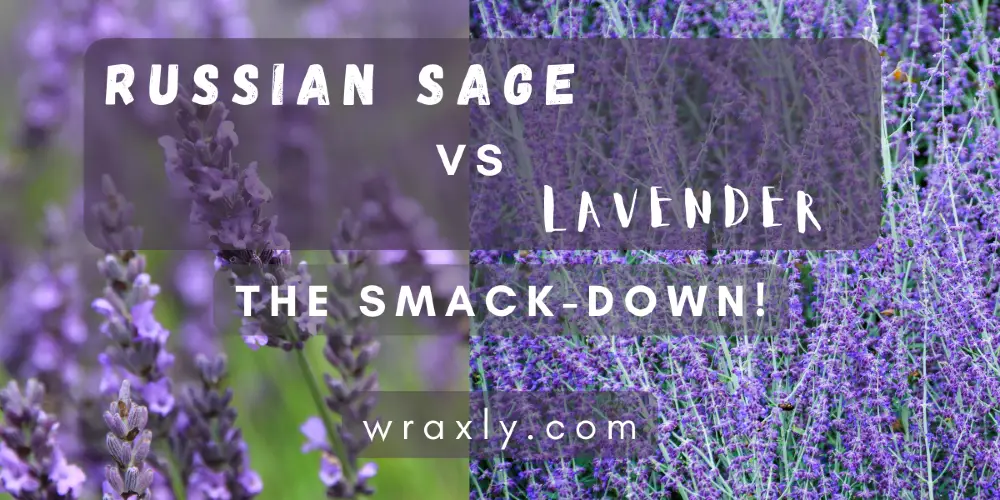
- Introducing Russian Sage
- Introducing Lavender
- The Similarity of Sage and Lavender
- How to Tell the Difference Between Sage and Lavender?
- Tips on How to Choose the Right Plant for Your Garden: Russian Sage vs. Lavender
- Can You Plant Russian Sage and Lavender Together?
- Russian Sage vs Lavender: Final Verdict
Introducing Russian Sage
If you’re looking for a plant that’s both beautiful and easy to care for, look no further than Russian Sage (Perovskia atriplicifolia). This perennial is drought-tolerant and can thrive in poor soil, making it a great choice for those with a brown thumb.
Russian Sage is covered in delicate purple flowers from late summer to fall, attracting bees and butterflies to your garden. It’s also a deer-resistant plant, so you don’t have to worry about your hard work being undone by foraging animals.
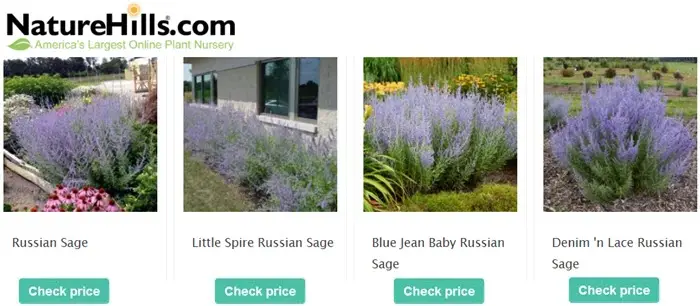
A member of the mint family, Russian Sage is native to the dry steppes of Central Asia. It was introduced to Western gardens in the 19th century, and it’s been a popular choice ever since.
Russian Sage grows about 3 to 4 feet tall and wide, with a woody base and a sprawling habitat. The leaves are small and silver-gray, and the flowers are a beautiful lavender blue.
Tips on Planting Russian Sage in Your Garden
To plant Russian sage, choose a spot in your garden that receives full sun. It’s tolerant of a wide range of soil types, but it prefers sandy or gravelly soil that’s well-drained.
Amend your soil with compost if it’s particularly heavy or clay-like.
Once you’ve chosen a spot, dig a hole that’s twice as wide as the plant’s root ball and just as deep. Gently loosen the roots of the plant and place them in the hole. Backfill the hole with soil and water deeply.
Once your Russian sage is planted, it doesn’t need much care.
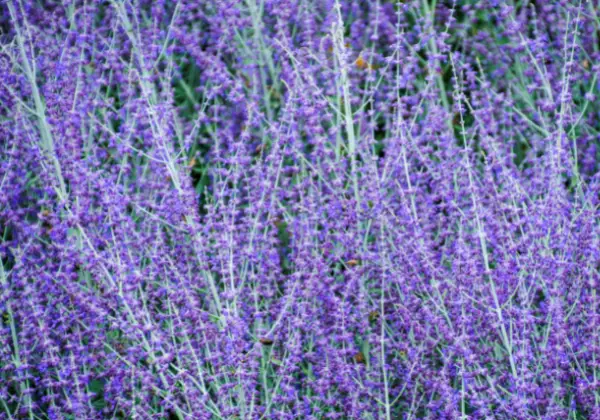
Water it deeply once a week during its first growing season and then cut back to once every two weeks after that. It’s not necessary to fertilize Russian Sage, as it’s tolerant of poor soil. If you’d like, you can give it a light trimming after it blooms to encourage fresh growth.
Other than that, just sit back and enjoy the beauty of this easy-care plant!
Introducing Lavender
Lavender is an incredible plant with a rich history dating back thousands of years. The Egyptians used it in their baths, the Romans used it to scent their clothes, and the Greeks used it as a cure for insomnia.
It also has a long history of use in both herbal medicine and aromatherapy. The Latin name for Lavender is Lavandula angustifolia, which means “narrow-leaved Lavender.” This refers to the shape of the leaves, which are long and slender.
The plant is native to the Mediterranean region and is a member of the mint family.
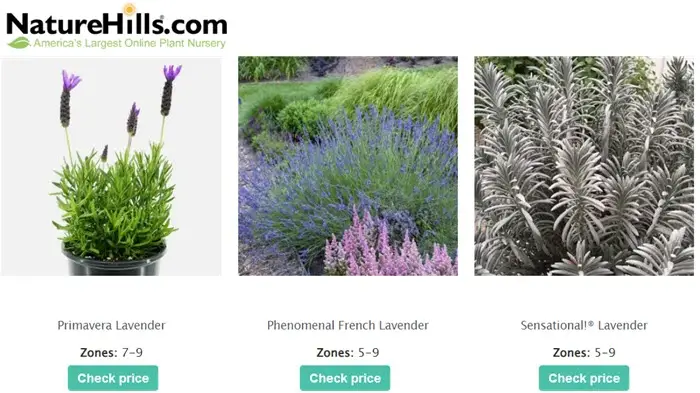
What Does Lavender Smell Like?
Lavender has a sweet, floral scent that is both calming and relaxing. It is often used in products designed to promote sleep or relaxation. Lavender is also used in many natural remedies for anxiety and stress.
In fact, it is one of the most popular essential oils used in aromatherapy. Lavender oil is extracted from the flowers of the plant and is used in a variety of ways. It can be used in diffusers, added to lotions and creams, or even used in cooking.
If you are looking for a plant that is both beautiful and useful, Lavender is a great choice! Introducing this versatile and beneficial plant into your life is sure to be a positive experience.
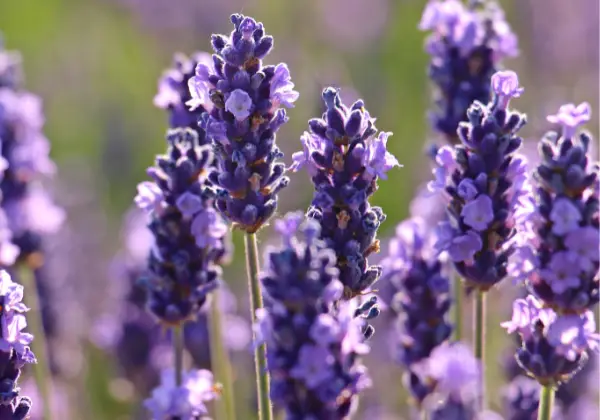
Tips on Planting Lavender in Your Garden
The plant itself is a beautiful addition to any garden. And the best part is that it comes back every year. Lavender is also relatively easy to grow and care for. But the best conditions for its growth involve full sun and well-drained soil. Once established, Lavender is quite drought tolerant.
Here are some tips on how to plant Lavender in your own garden:
- Choose a sunny spot in your garden that has well-drained soil. Lavender does not like wet or soggy soil.
- Prepare the soil by loosening it up and adding some materia organica.
- Plant your Lavender plants 18-24 inches apart.
- Water your plants regularly, especially during the hot summer months. (Read: How often to water Lavender)
- When the plants are big enough, you can trim them back to encourage new growth.
Enjoy your Lavender plants and the wonderful fragrance they will add to your garden!

The Similarity of Sage and Lavender
As we said, there are so many similarities between these two plants that most people literary think they’re the same.
Here are a few similarities between these two lovely plants:
1. Both Are Used in Traditional Medicine and Cooking
Lavender and Russian Sage both have a long history of use in traditional medicine and are known for their calming and relaxing properties. Both herbs are also used in cooking and have a similar flavor profile, with a slightly sweet and minty taste.
2. Both Are Easy to Grow and Maintain
Lavender and Russian Sage are easy to grow and care for. They both prefer full sun and well-drained soil. They are drought-tolerant and can be grown in a wide range of climates. They are also both low-maintenance requiring plants that don’t need a lot of care.
3. Both Are Used in Aromatherapy
Lavender and Russian Sage are also both used in aromatherapy and have similar benefits. Both herbs can help to ease anxiety and stress, promote sleep, and boost mood. They can also be used to help relieve headaches and migraines.
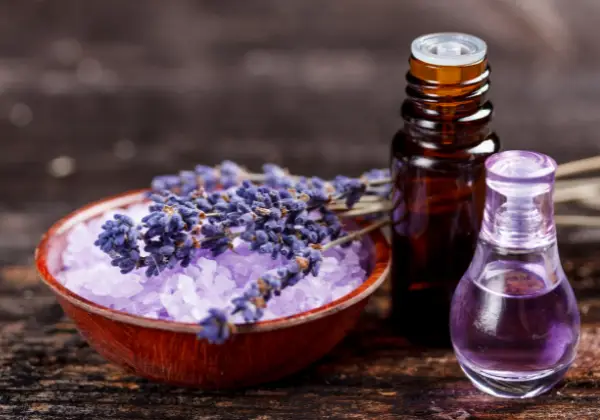
4. Both Plants Are Fast Growers
Since they both grow quickly, you need to prune your plants back at the end of the growing season. The ideal time is not in the thick of the flowering season, but rather before the initial burst of new growth. Since the plant doesn’t always react well to pruning, it’s better to wait until the spring to do this.
5. Both Are Used in Making Tea
Another similarity between these two herbs is that they can both be used to make tea. Both Lavender and Sage tea has a calming effect and can help relieve stress.
6. Both Plants Are Prone to Pests and Diseases
Pests may attack either plant; however certain pests favor one plant over the other. Lavender and Russian Sage are both prone to fungal attacks, which may develop in moist environments. This is why you should explore some organic pest control options and give the plants as much light as possible.
Potrebbe interessarti anche… Una guida per principianti alla coltivazione della stevia
How to Tell the Difference Between Sage and Lavender?
If you’re ever doubtful about whether a plant is a Russian Sage or Lavender, there are a few key differences you can look for:
| Russian Sage | Lavanda |
|---|---|
| Russian Sage can grow up to 4 feet tall | Lavender usually only reaches about 2 feet in height |
| The leaves are narrow and lance-shaped with a pointed tip | The leaves are wider than those of Russian Sage and have a more oval shape |
| The leaves of Russian Sage are more silver-gray in color | The leaves of Lavender are greener in color |
| Its flowers are small and clustered together in large groups | Its flowers are larger and more solitary, growing on stems |
| Russian Sage flowers are more blue-purple | Lavender flowers are more of a true purple |
| Russian Sage is known for being quite fragrant | Lavender has a more subtle, herbal scent. |
Besides these differences in appearance, there are also some key distinctions in how both these plants grow and are used:
- Lavender is a perennial (lives more than 2 years) in most climates, while Russian Sage is annual or biennial (lives for 1-2 years)
- Lavender blooms in late spring or early summer, while Russian Sage blooms in late summer or early fall
- Lavender is often used in culinary dishes or as a decoration, while Russian Sage is more often used for its medicinal properties.
Tips on How to Choose the Right Plant for Your Garden: Russian Sage vs. Lavender
If you’re looking to brighten up your garden with some color, you may be wondering which one – Russian Sage vs Lavender – is the right plant for you. Here are a few tips to help you choose the right plant for your garden:
- Consider the climate you live in. Russian Sage is more tolerant of hot, dry conditions, while Lavender prefers cooler, more humid conditions.
- Think about the amount of sun and shade your garden gets. Russian Sage can tolerate more sun than Lavender, which prefers some afternoon shade.
- Consider the size of the plant. Russian Sage can get quite large (up to 4 feet tall and wide), while Lavender stays relatively small (usually around 2 feet tall and wide).
- Decide what you want the plant to do in your garden. If you’re looking for a plant that will attract bees and other pollinators, Lavender is a good choice. If you’re looking for a plant that will add some height and interest to your garden, Russian Sage is a good choice.

Can You Plant Russian Sage and Lavender Together?
If both Sage and Lavender are right for your garden, you might be wondering which one to plant. Well, you’re in luck if you love the look of Lavender and Russian Sage together.
Potrebbe interessarti anche… Best soil for hydrangea
Yes, Russian Sage and Lavender can be grown together. Because they are both members of the mint family, Lamiaceae and they share many characteristics including being drought tolerant and enjoying the pieno sole. They also have similar flowering times.
However, Lavender is a bit more delicate than Sage. When planting these two together, make sure to give the Lavender a bit more attention. Amend the soil with some bagged compost or other organic matter to help it retain moisture, and water regularly (but don’t overdo it).
You’ll also want to give the Lavender plants a bit more space to spread out than you would for the Russian Sage.
With a little care, you’ll have a stunning display of Lavender and Russian Sage that will bloom beautifully together all summer long!
Per ulteriori letture
- Coltivare la lavanda dai semi
- Lavanda spagnola: una guida completa alla coltivazione e alla cura
- La lavanda ricresce ogni anno?
- Quanto spesso innaffiare la lavanda?
- Piante da compagnia di lavanda
Russian Sage vs Lavender: Final Verdict
Whether you’re looking to add some color and fragrance to your garden or want to try your hand at herb gardening, Lavender and Russian Sage are both great choices.
In general, if you want a low-maintenance plant that can tolerate hot, dry conditions, Russian Sage may be the better choice. If you prefer a plant with a strong fragrance and abundant flowers, Lavender may be a better option.
And if you live in the perfect climate, why not grow both together, so you don’t have to engage in the “Russian Sage vs Lavender” debate anymore?

Darrell ha una passione per il giardinaggio che ha ereditato da suo padre. Andare Qui per saperne di più sull'influenza che suo padre ha avuto nel suo amore per il giardinaggio. Se vuoi inviare un messaggio veloce a Darrell, allora visita la sua pagina di contatto qui.

![Come innaffiare le piante d'appartamento [Cura delle piante 101]](https://wraxly.com/wp-content/uploads/2021/03/How-to-Water-Indoor-Plants-Plant-Care-101-1200-1024x576.webp)

![Piante in crescita da talee [Una semplice guida]](https://wraxly.com/wp-content/uploads/2021/03/Growing-Plants-from-Cuttings-A-Simple-Guide-1200-1024x576.webp)